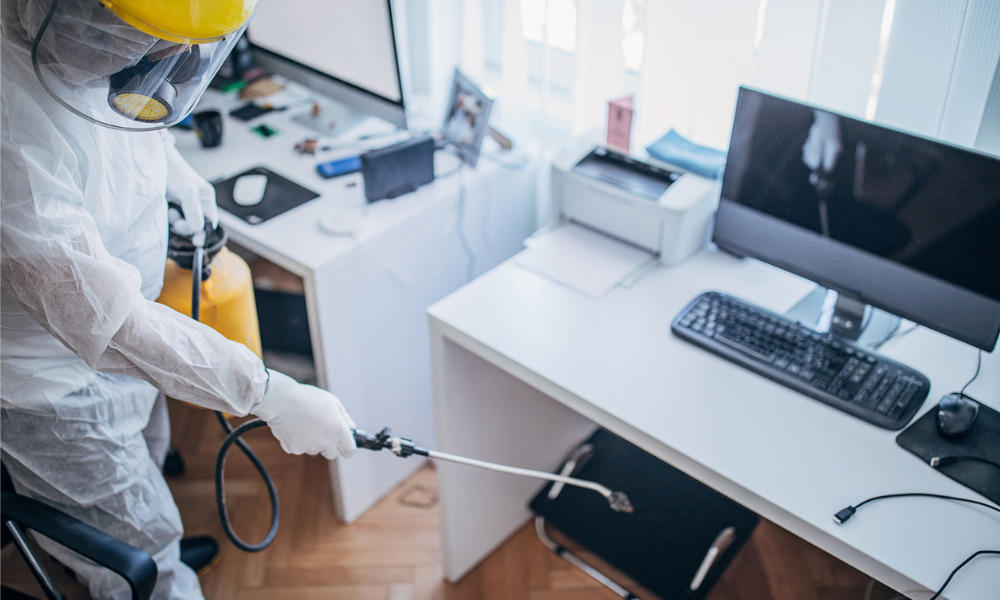‘A lot of these plans weren’t taken seriously by companies in the past’

Many employers were caught off guard by the impact of the COVID-19 pandemic.
And now, many (75 per cent) are concerned about pandemics affecting their business, according to First Onsite Property Restoration, which conducted a survey of 509 Canadian businesses in March.
Canadian HR Reporter spoke with Bill Fender, senior vice president for commercial property portfolios at the company, for tips on how employers should prepare.
“Our recommendation to clients is to prepare for basically everything as part of their business continuity plans and their disaster recovery plans, and pandemic is part of that,” he says. “It’s top of mind right now. It’s actually – from what we’ve seen in the last year – forcing a lot of companies to look at their overall preparedness and planning.
Simulating crisis
Before COVID-19, it was well known that a pandemic was possible, says Fender, adding that “It’s almost a once-in-a-century thing”.
However, 82 per cent of employers did not list pandemics or other major health crises among the top 10 risks on their risk registers before the COVID-19 crisis, according to a separate survey.
“It was pandemics, natural disasters and any of those preparedness plans – A lot of these plans weren’t taken seriously by companies in the past,” says Fender.
It’s not that employers did not have plans in place, but there seems to be a lack of plan simulation, he says.
“They have plans in place, and a lot of times those are very good plans. However, they may not assess the plans and exercise them and understand them as they should do. I think a lot of them are realizing that now, that the pandemic was actually a major test for their plans.
“Maybe they put a pandemic plan years ago, hadn’t really reviewed it, and then we get hit with a pandemic and then on they fly, they need to make changes and [adjust] to the circumstances that presented itself.”
Planning for a pandemic
There’s really not much difference when it comes to the process of planning for business continuity, whether it be for cases of natural calamity, disaster or pandemics, says Fender.
“The core planning and the fundamentals of the plan should be the same. Because really it is how you prepare in advance and execute the plan in circumstances that may be beyond your control.”

Bill Fender
Overall, planning for a pandemic must start from the top management of the company, says Fender.
“[Those] at the C-suite level know just how much of an impact it has on their business and their people [so] they have to buy in and they have to be the ones that are really pushing for the preparedness of the planning. So it has to be everyone in the organization right from the top.”
But lower-level employees have had to do their own business continuity planning even on a personal level, especially when they were forced to work from home, says Fender.
“Everybody executed, even at their homes, a disaster recovery plan on a personal level. Even if it’s not documented, they have to find ways to adapt. And I think what companies and employees are realizing is that [the pandemic has] a lot of impact [with them] having to work from home.
And when it comes to the actual act of planning and reviewing business continuity plans, the more people involved, the better, says Fender.
“For the key employees, especially supervisors and managers, they should be well aware and should be part of the exercising and the testing of the plans, being able to review them and comment on them. And then as far as employees, this will be up to each employer, but to involve as [many] of them as possible in the planning and letting them know that if there is an incident: ‘Here’s how we’re going to communicate with you’ or [asking them] ‘How do we communicate with you?’
“I can’t overstate how important communication is during a disaster or pandemic.”
Canadian HR Reporter spoke with an expert for tips on effective employee communication during the pandemic.




